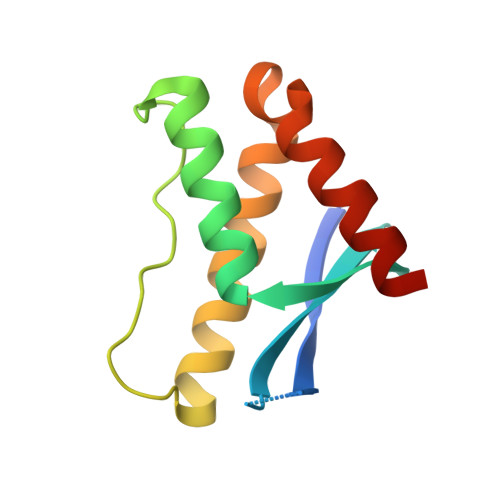Phox homology band 4.1/ezrin/radixin/moesin-like proteins function as molecular scaffolds that interact with cargo receptors and Ras GTPases
Ghai, R., Mobli, M., Norwood, S.J., Bugarcic, A., Teasdale, R.D., King, G.F., Collins, B.M.(2011) Proc Natl Acad Sci U S A
- PubMed: 21512128
- DOI: https://doi.org/10.1073/pnas.1017110108
- Primary Citation of Related Structures:
3LUI - PubMed Abstract:
Following endocytosis, the fates of receptors, channels, and other transmembrane proteins are decided via specific endosomal sorting pathways, including recycling to the cell surface for continued activity. Two distinct phox-homology (PX)-domain-containing proteins, sorting nexin (SNX) 17 and SNX27, are critical regulators of recycling from endosomes to the cell surface. In this study we demonstrate that SNX17, SNX27, and SNX31 all possess a novel 4.1/ezrin/radixin/moesin (FERM)-like domain. SNX17 has been shown to bind to Asn-Pro-Xaa-Tyr (NPxY) sequences in the cytoplasmic tails of cargo such as LDL receptors and the amyloid precursor protein, and we find that both SNX17 and SNX27 display similar affinities for NPxY sorting motifs, suggesting conserved functions in endosomal recycling. Furthermore, we show for the first time that all three proteins are able to bind the Ras GTPase through their FERM-like domains. These interactions place the PX-FERM-like proteins at a hub of endosomal sorting and signaling processes. Studies of the SNX17 PX domain coupled with cellular localization experiments reveal the mechanistic basis for endosomal localization of the PX-FERM-like proteins, and structures of SNX17 and SNX27 determined by small angle X-ray scattering show that they adopt non-self-assembling, modular structures in solution. In summary, this work defines a novel family of proteins that participate in a network of interactions that will impact on both endosomal protein trafficking and compartment specific Ras signaling cascades.
Organizational Affiliation:
Institute for Molecular Bioscience, The University of Queensland, St. Lucia, Queensland 4072, Australia.















